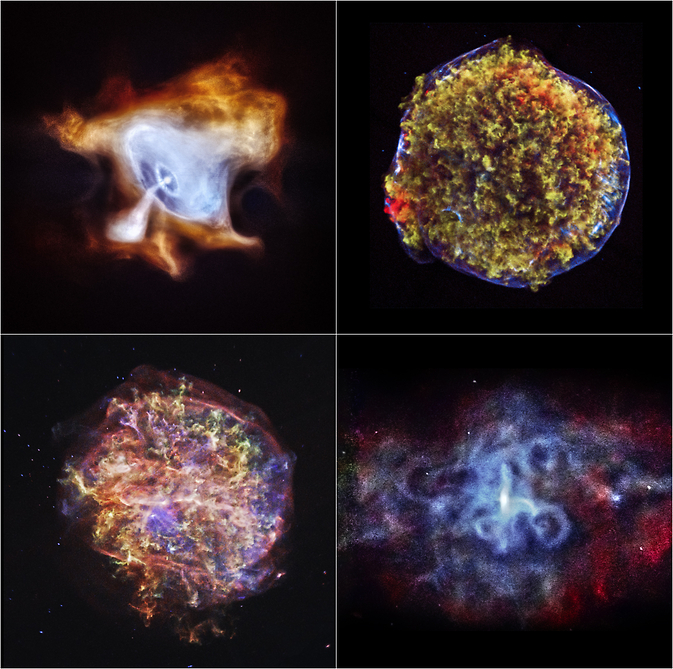
 Credit: NASA
Credit: NASA
Chandra at 15
Fifteen years ago, on July 23, 1999, the Space Shuttle Columbia carried aloft in its payload bay an extraordinary instrument, NASA's third "Great Observatory", the Chandra X-ray Observatory. After being released from Columbia, Chandra's Inertial Upper Stage propelled the observatory to its final orbit, a highly elliptical path taking it a third of the way to the moon. Chandra's complement of instruments include the Advanced CCD Imaging Spectrometer (ACIS), the High Resolution Camera (HRC), and the Low Energy and High Energy Tranmission Grating Spectrometers (LETGS and HETGS, respectively), but its real claim to fame is its exquisite X-ray mirror assembly, the finest ever flown. Chandra's mirrors and cameras are capable of distinguishing objects separated by only one-half arcsecond, which the equivalent to reading a stop sign at a distance of twelve miles (assuming the stop sign was emitting X-rays).
During the past 15 years, Chandra has taken over 14,000 observations of X-ray emitting planets, normal stars, black holes, neutron stars and other compact objects, galaxies and galaxy clusters, and has measured the hot wreckage from stellar explosions and galaxy collisions, and probed the mysterious dark matter which makes up much of the cosmos. The images above are representative of the last 15 years: four beautiful Chandra observations of famous supernova remnants, the Crab Nebula (upper left), Tycho (upper right), G292.0+1.8 (lower left), and 3C58 (lower right). Astronomers hope to have access to Chandra's unique imaging and spectrometric capabilities for years to come.
Published: July 28, 2014
<
HEA Dictionary ● Archive
● Search HEAPOW
● Other Languages
● HEAPOW on Facebook
● Download all Images
● Education ● HEAD
>

Each week the HEASARC
brings you new, exciting and beautiful images from X-ray and Gamma ray
astronomy. Check back each week and be sure to check out the HEAPOW archive!
Page Author: Dr. Michael F. Corcoran
Last modified Monday, 29-Jul-2024 17:51:58 EDT


